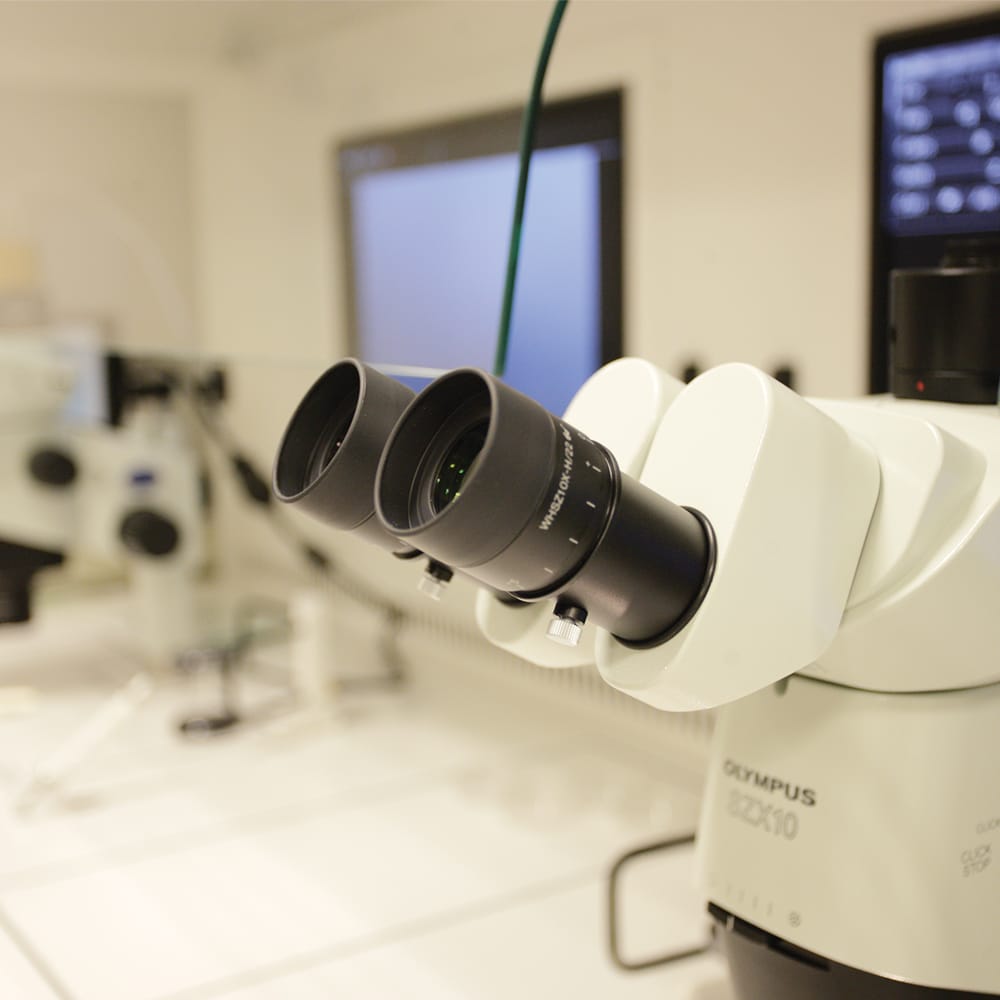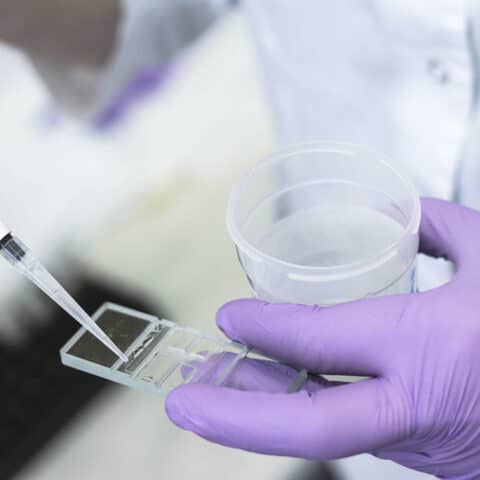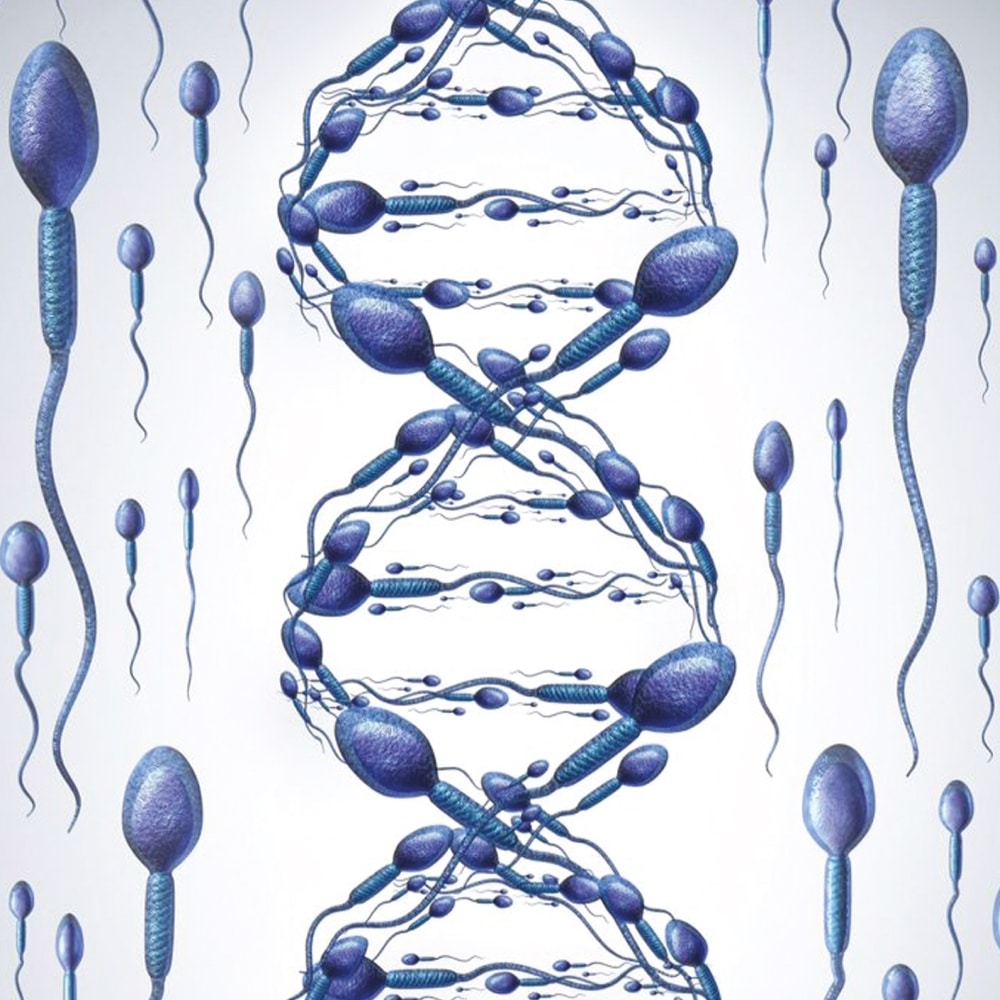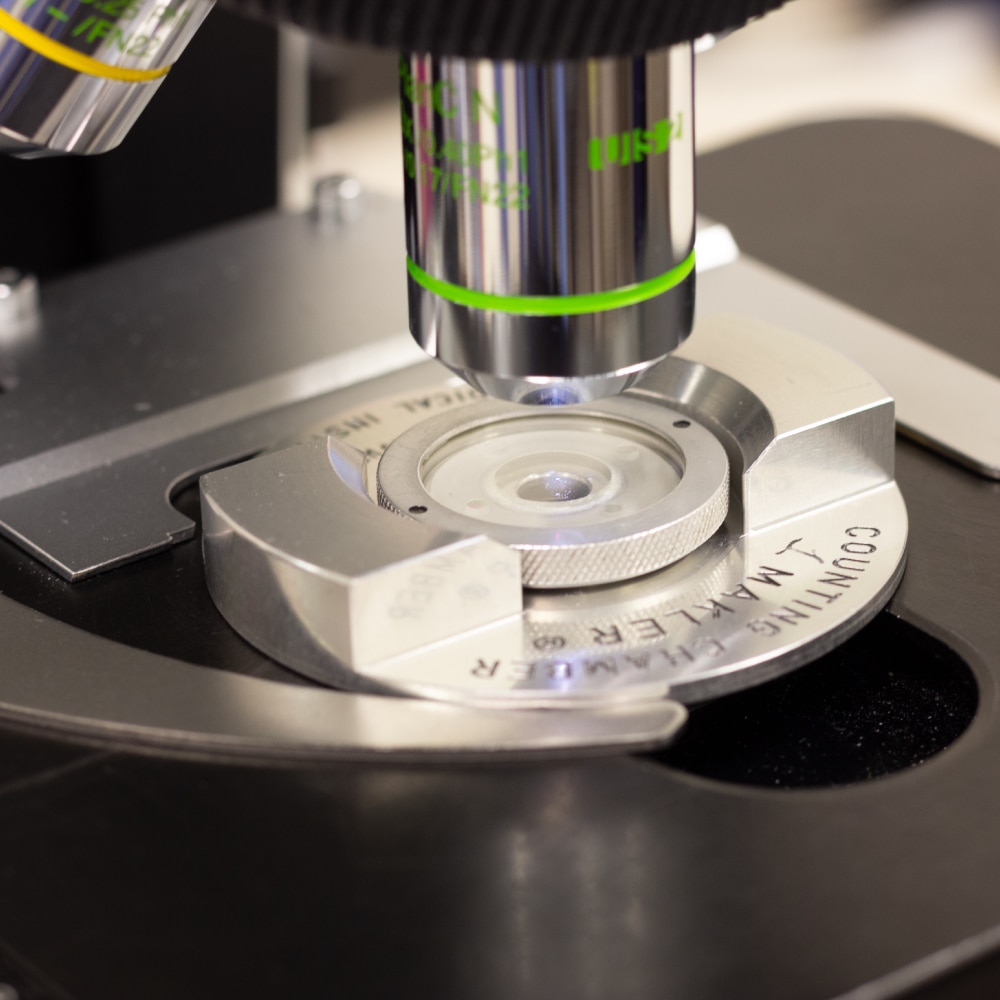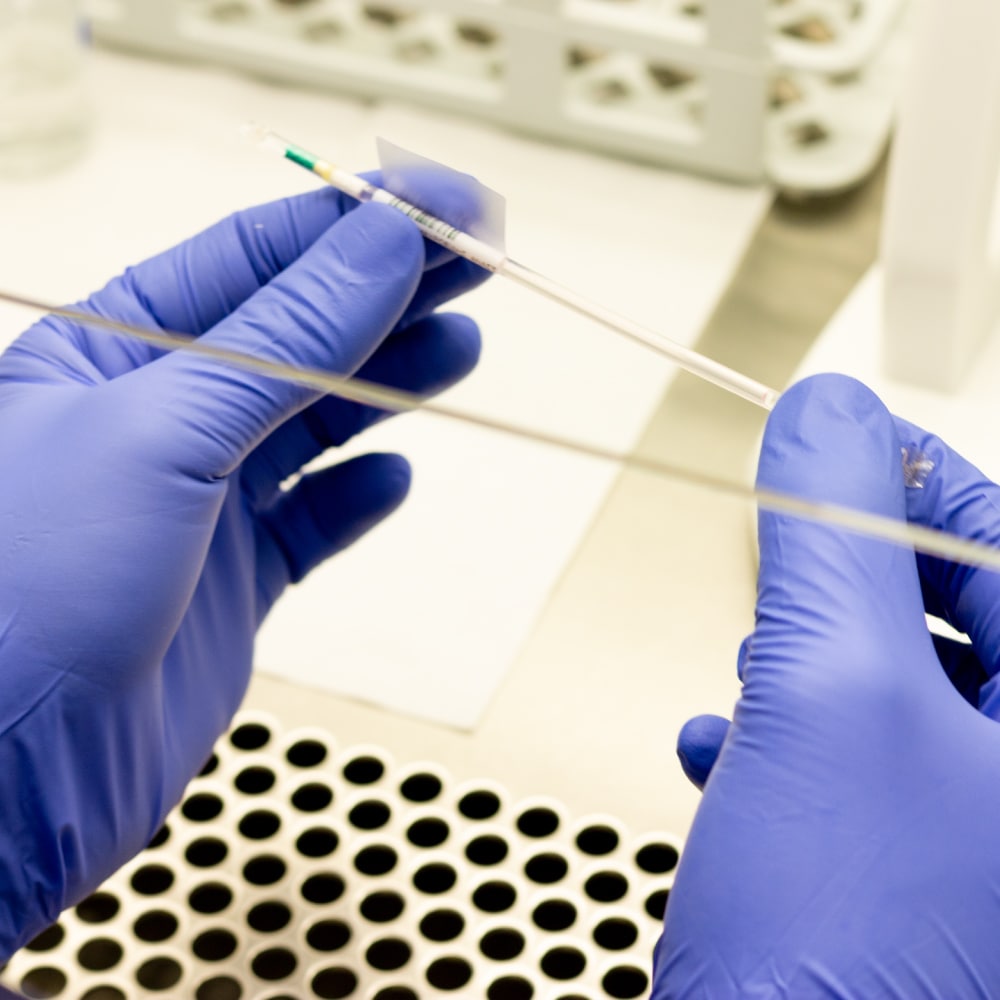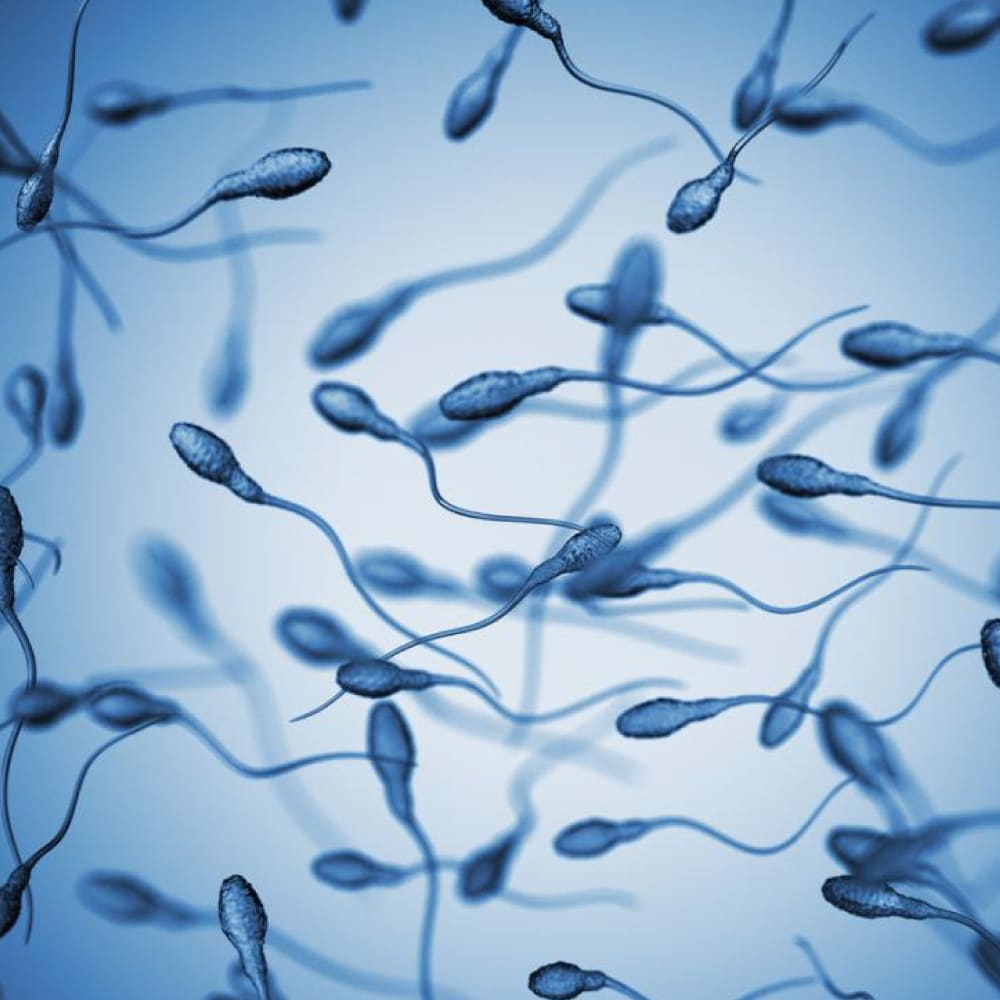Innovative lab techniques
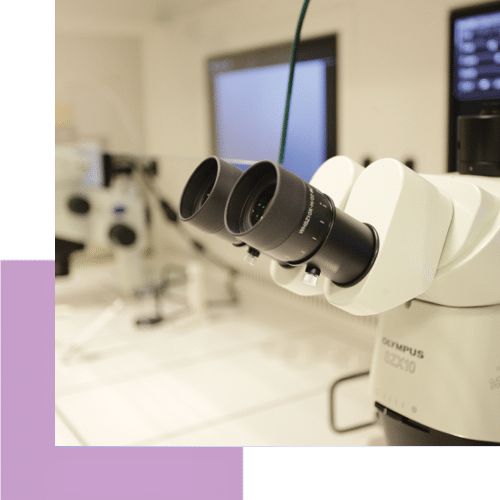
The causes of male infertility are addressed and the chances of success are maximized, based on innovative lab practices.
Careful investigation of male infertility aims to find the cause. However, the ultimate aim is to treat it as best possible, so as to reach the desired result.
To this end, and based on innovative lab practices, the causes are addressed and the chances of success are maximized, based on innovative lab practices.
Choosing the most suitable sperm during assisted reproduction plays a major role in the end result, as it affects both the success rates of the processes, and the quality and viability of the embryos. Therefore, the most suitable sperm is chosen after choosing the most suitable lab method, which meets the individual needs of each case.
SPERM VD – INNOVATIVE METHOD FOR LOW SPERM COUNT CRYOPRESERVATION
Sperm VD is a new cryopreservation method for samples with extremely low sperm count, using the vitrification technique. This method guarantees:
- Optimum preservation of male fertility
- Minimal sperm loss after thawing
- Decreased need for interventional surgical procedures
- Easy sperm retrieval
Contrary to the existing cryopreservation techniques, which are often contraindicated in cases of very low sperm count and during which a percentage of sperm does not survive thawing, sperm VD guarantees complete recovery of the number and motility of the sperm that were cryopreserved.
Moreover, it contributes towards avoiding surgical procedures, such as testicular biopsy (TESE/micro-TESE), while a significant advantage of this new platform is the fact that it is possible to thaw only the number of sperm necessary compared to the number of eggs collected during oocyte retrieval. This method is suitable for oligospermic patients and patients who have undergone testicular biopsy.
MICROFLUIDIC CHIPS
Through this method, the sample is treated using special chips, which mimic the natural selection process, without mechanical interventions on the sample that would have a negative effect on the sperm (e.g. increased DNA fragmentation, increased oxidative stress).
The microfluidic chips sort the motile from the immotile sperm and then eventually isolate motile sperm with better morphology and a DNA fragmentation index similar to the original sample.
This method is proposed and applied in cases involving:
- High DNA fragmentation rate
- High oxidative stress level
- Repeated miscarriages
- Low morphology rate (teratospermia)
PICSI
According to multiple studies, the PICSI method is a new approach for successful sperm selection using the ICSI assisted reproduction technique. Based on the PICSI method, sperm that bind to hyaluronic acid present maximum DNA integrity, while they seem to be more mature and suitable for fertilization.
This method is proposed and applied most effectively in cases involving:
- High DNA fragmentation rate
- Unexplained infertility
- Implantation failure
- Repeated miscarriages
IMCI
The innovative IMCI method is an improved level of the ICSI assisted reproduction technique. Based on this method, it is possible to select the most suitable sperm through magnification is excess of 6000x, assessing its morphology to the greatest extent, compared to simple ICSI. This method is proposed and applied most effectively in cases involving:
- Very low morphology rate (teratospermia)
- Low sperm count (oligospermia)
- Implantation failure
MACS
The MACS method is a powerful tool in optimizing sperm selection during assisted reproduction. It is a new technique for sorting apoptotic and non-apoptotic sperm based on phosphatidylserine expression. As a result, apoptotic sperm is removed and the best is eventually collected.
In this technique, sperm with lower DNA fragmentation rates, higher progressive motility and better morphology compared to the initial samples is isolated.
Related Topics
-
Azoospermia / Retrograde ejaculation
Azoospermia / Retrograde ejaculation During retrograde ejaculation, the semen travels into the bladder and, as a result, the man...
-
Innovative lab techniques
Innovative lab techniques The causes of male infertility are addressed and the chances of success are maximized, based on...
-
Ultrasound
Ultrasound It is often used to diagnose the causes of male infertility, but also problems linked to male sexuality....
-
Genetic Testing
Genetic Testing The advancements in molecular biology and genetics offer the possibility of examining the genes involved in sperm...
-
Hormone Testing
Hormone Testing A hormone test is a blood test that measures the levels of hormones, which play a major...
-
Investigation of male reproductive tract inflammation
Investigation of male reproductive tract inflammation If the semen analysis indicates an infection (increased number of round cells, mucus,...
-
DNA Fragmentation Testing
DNA Fragmentation Testing DNA fragmentation assay is the most important sperm function test. DNA fragmentation assay is the most...
-
Microbiological and Biochemical Analysis
Microbiological and Biochemical Analysis Microbiological analysis is recommended when there is a history of inflammation or indication such as...
-
Sperm activation / Sperm viability
Sperm activation / Sperm viability The total number of progressively motile sperm after sample treatment is calculated. The most...
-
Semen Analysis
Semen Analysis A semen analysis is the key test for investigating male infertility. It is performed in compliance with...



